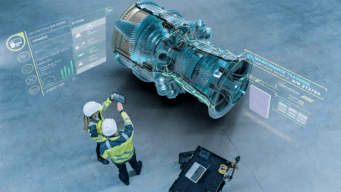In my previous blog I covered the growing role of strategic alliances in the oil and gas sector. This time, I’m going to talk about merger and acquisition (M&A) activity. After a period of stagnation, M&A deals are once more on the rise. Companies have to work very hard to get the value they expect from this investment. Underestimating the affect of IT integration is an area where mergers and acquisitions often flounder. What can oil and gas firms do to increase their chance of success?
While still some way off pre-2014 levels, global oil and gas mergers and acquisitions are increasing. The 2017 mid-year report from Deloitte showed M&A activity at $135 billion – compared to $87 billion for the same period in 2016. The recovery in M&A activity appears to be driven by what’s happening upstream in the exploration and production sectors. Although many analysts put a good part of the recovery down to what CNBC called the ‘gold rush’ in the Permian Basin, West Texas. There are, however, big deals being signed in all sectors of oil and gas.
M&A is important but not easy
Deloitte points out two areas behind the return to M&A growth. First, the upstream sector, there are asset-based deals designed to scale portfolios in preparation for the expected recovery in the sector. In the downstream sector, National Oil Companies are making investments in refining assets in consuming countries to overcome temporary oil limits.
If properly managed, M&A activity can strengthen a company’s portfolio and increase sustainable revenue growth. Badly managed, however, a new merger or acquisition can distract both companies from their core business, fail to realize the expected value and, even, allow competitors to steal business. These deals are likely to fail.
And, fail they do. According to the Harvard Business Review between 70-90% of all mergers fail. This is a shocking statistic but not so surprising when you think about it. We are all well aware of how challenging any large scale transformation and integration project is – when you have two companies, two cultures and two sets of technical infrastructure that challenge more than doubles.
I want to concentrate on that last part: The technical infrastructure. It can be the quiet wrecker of seemingly promising M&A deals.
Why IT integration should be front and center
When looking to successfully integrate a target company, there are very good reasons to start by looking at IT integration. McKinsey suggests that 50-60% of the initiatives intended to capture synergies from M&A activity are strongly related to IT. These are not just IT-related but also encompass the many IT-enabled processes including HR, Finance and customer experience.
There are two main areas, I think, where companies can harness their IT better to increase the likelihood of M&A success. The first is to include IT involvement in due diligence and the second is to develop an ‘M&A-ready’ IT infrastructure.
Often, companies will concentrate on the business drivers and financing behind the merger but will pay little heed to what requires to integrate the information systems of the two companies. I have to stress just how little time organizations have to achieve a good degree of IT integration. They most certainly have to be quite well advanced within the first 100 days to meet end of quarter revenues or duty holdership obligations. Without IT involvement at the earliest stage, how can you effectively answer questions like:
- What are both companies complete portfolio of IT systems?
- Which of these can/should be integrated?
- Which of these should be retired/retained?
- Do you have visibility of all the data within the combined entity?
- What new systems will be required to facilitate the integration?
- Do you have the skills and resources to achieve speedy integration?
Get these questions right and achieve a successful IT integration and McKinsey says that an organization can realize 10-15% cost savings – which brings me to my second point of creating a ‘M&A-ready’ IT infrastructure.
Creating an ‘M&A-ready’ IT infrastructure
If overlooking IT is a recipe for disaster then taking a proactive approach to IT has the potential to help deliver the value from M&A deals. The company that spends time to create a flexible and streamlined IT infrastructure based around a platform with connectivity to the widest range of data, information and enterprise applications will be well positioned to accommodate the IT integration challenge prior to any M&A deal. In addition, the clear understanding of their own IT capabilities can deliver a more effective assessment of which target companies will be easier to integrate post-merger.
In this way, companies stand a far greater chance of hitting the aggressive business integration targets after the deal is completed. So, what should an “M&A-ready’ IT infrastructure consist of? Here are a few essential capabilities:
- Secure, scalable information management platform A platform that can allow for the secure sharing and exchange of data and content between business departments and companies.
- Enterprise and legacy integration The platform should connect seamlessly with enterprise and legacy systems to allow the companies to take a longer term view of system consolidation and migration.
- Standards-based infrastructure Implement a platform that adheres to industry standards to increase the likelihood of compatibility with the acquired company’s systems.
- Full data source coverage Breaking down silos takes time so the platform must be able to identify, capture, manage and distribute data – structured and unstructured – from almost any source.
- Advanced analytics capabilities Real-time analytics will be important for short-term reporting and, longer term, predictive analytics for operational and business optimization – executing value within the companies.
The platform – such as OpenText™ Enterprise Information Management sits at the heart of the ‘M&A-ready’ IT infrastructure. It provides all the functionality required to enable fast and effective integrations that allow companies to meet their short-term requirements while building a strong foundation to deliver the synergies that lead to long-term value from the merger company.
As the oil and gas sector recovers so M&A activity will grow. The companies that understand the pivotal role of IT in mergers and acquisitions are the ones that are likely to gain the most value from their investments – and provide a basis to digitally transform their business moving forward. In my next blog, I’ll look at the response of oil and gas companies to the rise and rise of renewables.




